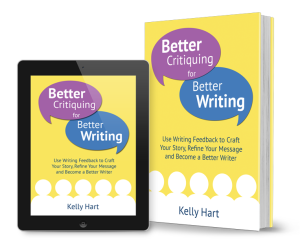
Good beta readers are people who can provide honest and objective feedback to a writer who has become too close to their own work. These people are ideally interested in the genre or topic and want to be one of the first people to read a new manuscript.
In return they tell the writer about the parts they enjoyed or didn’t enjoy as a reader. This helps the author pinpoint areas in their writing that may require more refinement.
A common misconception for new writers is that beta readers replace editors or proofreaders.
Absolutely NOT!
This is not the case at all.
A trained, eagle-eyed editor will sift through your entire manuscript for spelling, punctuation, grammar and structure issues.
Beta readers do not.
What beta readers can do, is point out errors that jump out at them but this is not something they intentionally look for. Instead, they’re looking for issues that annoy them, things like character inconsistencies, plot holes, head hopping, and confusing sentences or paragraphs.
So where does a beta reader fit into the process?
The best time to give beta readers your manuscript is after you have taken the manuscript as far as you can by yourself. You have done a couple of drafts, had some critiquing done on it and feel there is nothing more you can do without having some objective input, prior to sending to an editor, publisher or agent.
WAIT! Stop!
With a fresh pair of eyes your beta readers will read your entire manuscript from a reader’s perspective, providing you with valuable feedback on where their attention waned, where they were confused, and parts they really enjoyed.
This will give you the insight you need to refine your manuscript further before sending it to your editor.
Thank you beta readers!
Finding beta readers
The best type of beta reader is one that is genuinely interested in your topic or genre.
Here are a few places you can find them.
‘Targeted’ writing groups
You may want to join a writing group that specialises in your genre and see how the group interacts with each other, before approaching some members about the opportunity to be one of your selected beta readers.
Ask these people if they would be willing to beta read for you and let them know you are willing to return the favour for them.
Friends and family
You may have a friend or family member that likes your genre but who isn’t a writer.
They could make the perfect beta for you as long as you let them know what is expected and how they can provide good, honest feedback.
BEWARE of family and friends who flatter you by saying the manuscript is perfect. THIS WON’T HELP YOU!
Online beta reading groups
There are also beta reading groups available on Goodreads here and Facebook (use the Facebook search box), but make sure you trust the person before sending your entire manuscript off to them. You can always send off a couple of chapters first and see what kind of feedback they offer before sending the entire manuscript.
Should you pay for beta readers?
NO!
If you’ve selected the right beta reader, the topic of payment won’t even come up.
Most beta readers are not professional editors, sometimes they may be other writers who would like you to return the favour and read for them at some stage, and sometimes they’re a person who just loves reading.
But, an offer of appreciation is definitely worthwhile.
You have to remember that you’re asking for a large chunk of the beta reader’s time and it would be nice for you to give them a gift showing your appreciation.
Suitable gifts can be:
- return the favour and beta read for them
- a free print copy of the book when released
- a box of chocolates
- a bottle of wine
- or a gift voucher.
Also, you’ll want to add them to your acknowledgements in the book.
WATCH OUT!
There are some beta readers that offer this as a paid service, stay away!
If you are considering paying for a beta read, I strongly recommend choosing a manuscript assessment or structural edit from a professional editor instead.
You will get more detailed feedback and advice, and knowing you are dealing with a professional will give you peace of mind about your manuscript remaining confidential.
Preparing your beta reader
As a writer you need to be upfront about the timeline you have in mind and what you expect from the beta reader.
If the beta reader has never done this before, you should give advice to the beta reader about how they can provide you feedback. This can include giving the beta reader some instructions and a feedback form to guide them.
My gift to you
I’ve provided a FREE Beta Reader Feedback Form template for you to download and use right away.
Using beta reader feedback
That’s right; this blog isn’t complete without mentioning how to go about implementing beta reader feedback.
There are many ways to do this and you can certainly alter this method to suit your own needs.
Find a nice, quiet place where you will be comfortable to work for a few hours.
And prepare yourself.
Because you’ll receive feedback:
- which will be positive and leave you with a feel-good vibe
- which will be stuff you meant to do but completely forgot to address (this will make you want to slap yourself, but we all do it)
- which will be things you believe will really improve your manuscript
- which will leave you scratching your head and wondering if they read something other than the manuscript you gave them.
So before you start, take a deep breath, grab a cup of coffee or green tea.
Remind yourself that you should be thankful of the time and effort the beta readers have taken to help you improve your manuscript.
Taking your manuscript to a higher level of quality
First of all you want to read the forms that the beta readers filled in (download your template above). These will most likely have general feedback for you.
As you read through your beta readers’ feedback forms, tick or highlight comments that have been repeated by more than one beta reader. This usually means that there is an issue that more than one person has picked up on.
You also want to tick or highlight the comments you immediately agree with. These are the ones you want to try to correct first, but don’t start correcting now, just continue to sort your way through the feedback forms.
For comments that you don’t agree with or you’re uncertain about, leave them alone for a couple of days and give yourself time to think about them before reading them again. Really consider why the beta has suggested this and whether it will help improve the manuscript. If you still disagree with the comment after you have taken time to consider it thoughtfully, cross it out or ignore it.
Now go through the manuscript comments using the same process. Once this process is completed you’ll have a good plan of what you need to address in your manuscript.
Now, for a very important step.
Save a new version of your manuscript under a different file name.
This is the version you’ll apply your feedback changes to and you’ll have a previous backup version just in case.
Implement the small changes you ticked or highlighted first. Then in another pass on the manuscript you can start to implement the larger changes you agreed with.
Important tip: remember to keep saving your manuscript as you go through and make these changes. There is nothing worse than having a power cut and realising that your editing, which has taken you ages to do, has now been lost.
If you are making really large changes to the manuscript, you may want to save a few different revisions of your manuscript as you go along. This way, if you want to revert back to an earlier version of your manuscript because you changed your mind, you can.






Connect With Kelly